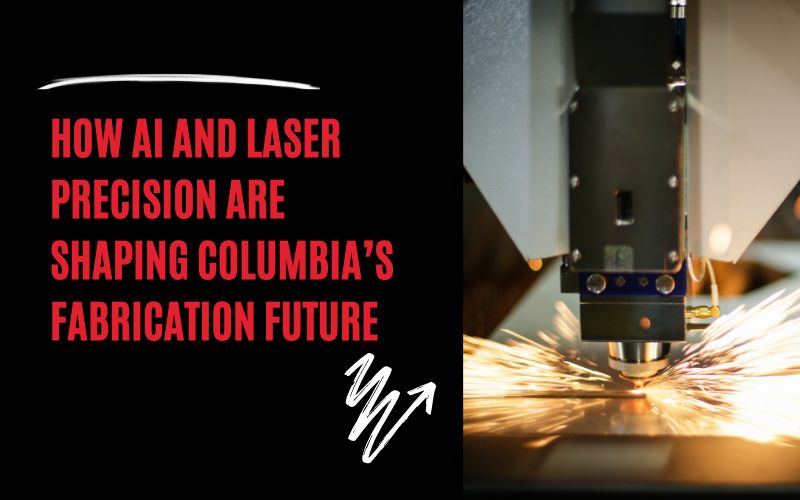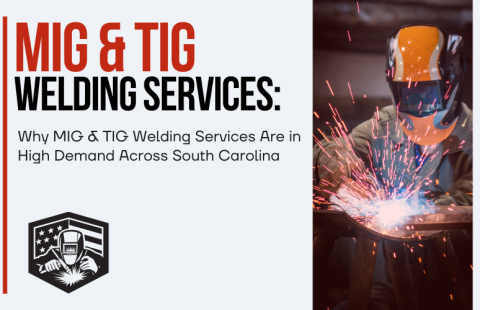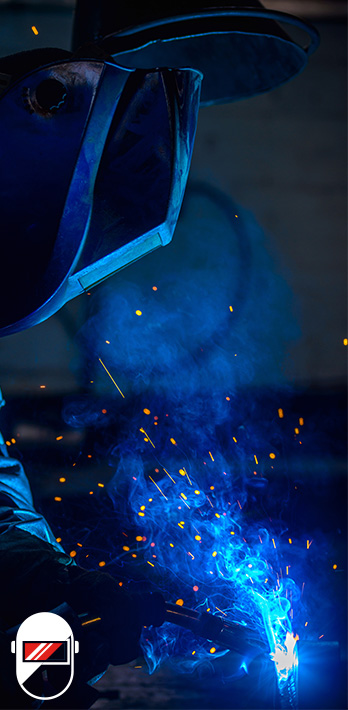
How AI and Laser Precision Are Shaping Columbia’s Fabrication Future
Can a beam of light and a line of code really reinvent a factory?
The fabrication industry in Columbia is starting a new phase. This shift is bold and fast. It is fueled by two strong forces. Guess what? Yes it’s AI and high-precision laser technology. Both these are changing the standards of metalwork, production speed and quality control.
Today the local industries seek precision and speed with reduced cost. Reliability is also another important factor they look for. AI and laser fabrication provides all of these. Furthermore, these are not just trends. Rather they are reshaping how Columbia builds, designs and competes.
The Role of AI in Fabrication
Imagine a robot in a Columbian factory checking every process such as examining the intensity of a laser , identifying errors immediately and modifying settings as needed. This is the role of AI. Machine learning algorithms direct lasers making them cut more quickly with less errors. AI-driven real time monitoring can examine thousands of items every second , removing the necessity for lengthy manual inspection.
This isn’t merely a concept.Over 62% of the recent researches highlight the use of AI powered controllers in practical applications increasing the quality and minimizing human errors. As a matter of fact , The Columbian manufacturing industries are running with less waste and more profit.Businesses experience up to 80% fewer item rejections when using intelligent lasers and AI based inspections systems.
Laser Precision Takes Accuracy to a New Level
While AI does the “brain work,” lasers do the “muscle work.”
Laser cutting, laser welding and laser engraving have become mainstream in Columbia. The reason is simple—lasers are extremely precise. They produce cleaner cuts. They reduce heat distortion. They provide the same level of accuracy and precision. Traditional cutting tools wear out. Lasers do not. Traditional methods require frequent calibration. Lasers rarely do. As a result, companies experience faster production with minimal disruptions. In fact, laser cutters are up to 50% faster than conventional mechanical systems. This enables the companies to manufacture in bulk while maintaining premium quality.
How AI and Lasers Work Together
The real magic happens when AI is mixed with laser technology. It can finetune laser cutting settings instantly, promising top quality output. For instance,they can modify the laser’s power and speed according to the materials processed.This ability to adapt minimizes waste and increases production efficiency.Moreover ,AI can identify trends in data manufacturing. It understands which combination can yield the best results over time , constantly enhancing the process. This combination enables fabricators to maintain the competitive edge.
Real-World Applications in Columbia
In Columbia, a few companies are using AI and laser precision to redefine their strategies. Consider Mobifab, a local company specializing in custom metal work and fabrication. Mobifab implemented AI-based software to analyze customer specifications and optimize production schedules. They reported a 25% decrease in lead times, enabling the company to undertake more projects without compromising quality. Additionally, environmental concerns are alleviated by the introduction of new product lines.
Economic Impact
This blending of AI and laser technology has significant economic outcomes. According to a report by Columbia Manufacturing Association , companies that adopt these technologies can enhance the annual profit by 20%.As the demand for high-precision components is high across industries such as aerospace, automotive , construction – their economic benefits of adopting these technologies are significant.
The use of these also leads to job creation. It is often heard that automation might decrease job opportunities but the reality revolves around something else.The new technology leads to new roles , expert technicians are needed to manage and innovate within these systems.
Overcoming Challenges
Despite the many advantages , the blending of AI and laser technology does throw certain challenges. The major factor here is the investment required. High quality machines and AI software can be really costly. But some companies think this might see these costs as initial investment. Staff must also be well trained and many firms offer training programs so that employees feel confident to work in their new roles.
Smooth Transitions and Future Prospects
Transitioning from manual work to AI and laser precision leads to improved processes. Short production runs, custom orders and rapid prototyping are all possible in days instead of weeks. AI guides the process. Lasers are accurate. Customers obtain their products faster and with fewer errors. Colombian companies are already exporting intelligent-manufacturing goods worldwide. Factories develop year by year. Which means less waste and more profit.
Ready to Step Into the Future of Fabrication?
If you are looking for innovation, speed, and accuracy, trust on Mobifab’s AI-driven laser fabrication. They transform your ideas into reality with advanced, future-focused technology
Mobifab: Where smart fabrication meets unmatched precision.


